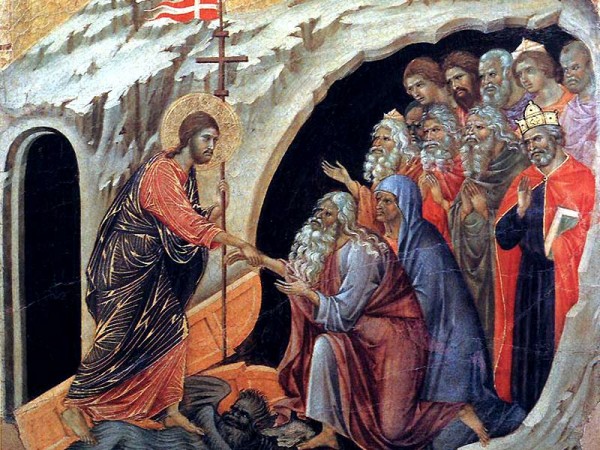The stature of the fullness of the Body of Christ

At Matins on Thursday:
From the Commentary on the Gospel of John by Origen, Priest
Both of these two things, the temple and the body of Jesus, appear to me, in one interpretation at least, to be types of the Church, and to signify that it is built of living stones, a spiritual house for a holy priesthood, built on the foundation of the Apostles and prophets, Christ Jesus being the head corner-stone; and it is, therefore, called a temple. Now, from the text, “You are the body of Christ, and members each in his part,” we see that even though the harmonious fitting of the stones of the temple appear to be dissolved and scattered, as it is written in the twenty-second Psalm that all the bones of Christ are, by the plots made against it in persecutions and afflictions, on the part of those who war against the unity of the temple in persecutions, yet the temple will be raised again, and the body will rise again on the third day after the day of evil which threatens it, and the day of consummation which follows. For the third day will rise on the new heaven and the new earth, when these bones, the whole house of Israel, will rise in the great Lord’s day, death having been overcome. And thus the Resurrection of the Saviour from the Passion of the Cross contains the mystery of the resurrection of the whole body of Christ.
But as that material body of Jesus was sacrificed for Christ, and was buried, and was afterwards raised, so the whole body of Christ’s Saints is crucified along with him, and now lives no longer; for each of them, like Paul, glories in nothing but the Cross of our Lord Jesus Christ, through which He is crucified to the world, and the world to Him. Not only, therefore, is it crucified with Christ, and crucified to the world; it is also buried with Christ, for we were buried with Christ, Paul says. And then he says, as if enjoying some earnest of the resurrection, that we rose with him, because he walks in a certain newness of life, though not yet risen in that blessed and perfect resurrection which is hoped for. Either, then, he is now crucified, and afterwards is buried, or he is now buried and taken down from the cross, and, being now buried, is to rise at some future time.
But to most of us the mystery of the resurrection is a great one, and difficult of contemplation; it is spoken of in many other passages of Scripture, and is specially announced in the following passage of Ezekiel: “And the hand of the Lord was upon me, and He led me out in the Spirit of the Lord, and set me in the midst of the plain, and it was full of human bones. And he said to me, Prophesy to these bones, and you shall say to them, Hear the word of the Lord, you dry bones”; and a little further on, “And the Lord spoke to me, saying, Son of man, these bones are the house of Israel.” And they say, “Our bones have become dry, our hope is lost, we have breathed our last.” For what bones are these which are addressed, “Hear ye the word of the Lord,” as if they heard the word of the Lord? They belong to the house of Israel, or to the body of Christ, of which the Lord says, “All my bones are scattered,” although the bones of His body were not scattered, and not even one of them was broken. But when the resurrection itself takes place of the true and more perfect body of Christ, then those who are now the members of Christ, for they will then be dry bones, will be brought together, bone to bone, and fitting to fitting (for none of those who are destitute of fitting will come to the perfect man), to the measure of the stature of the fullness of the Body of Christ.
